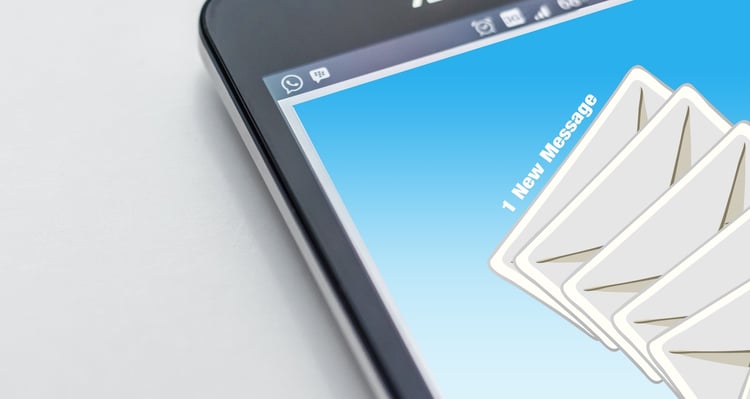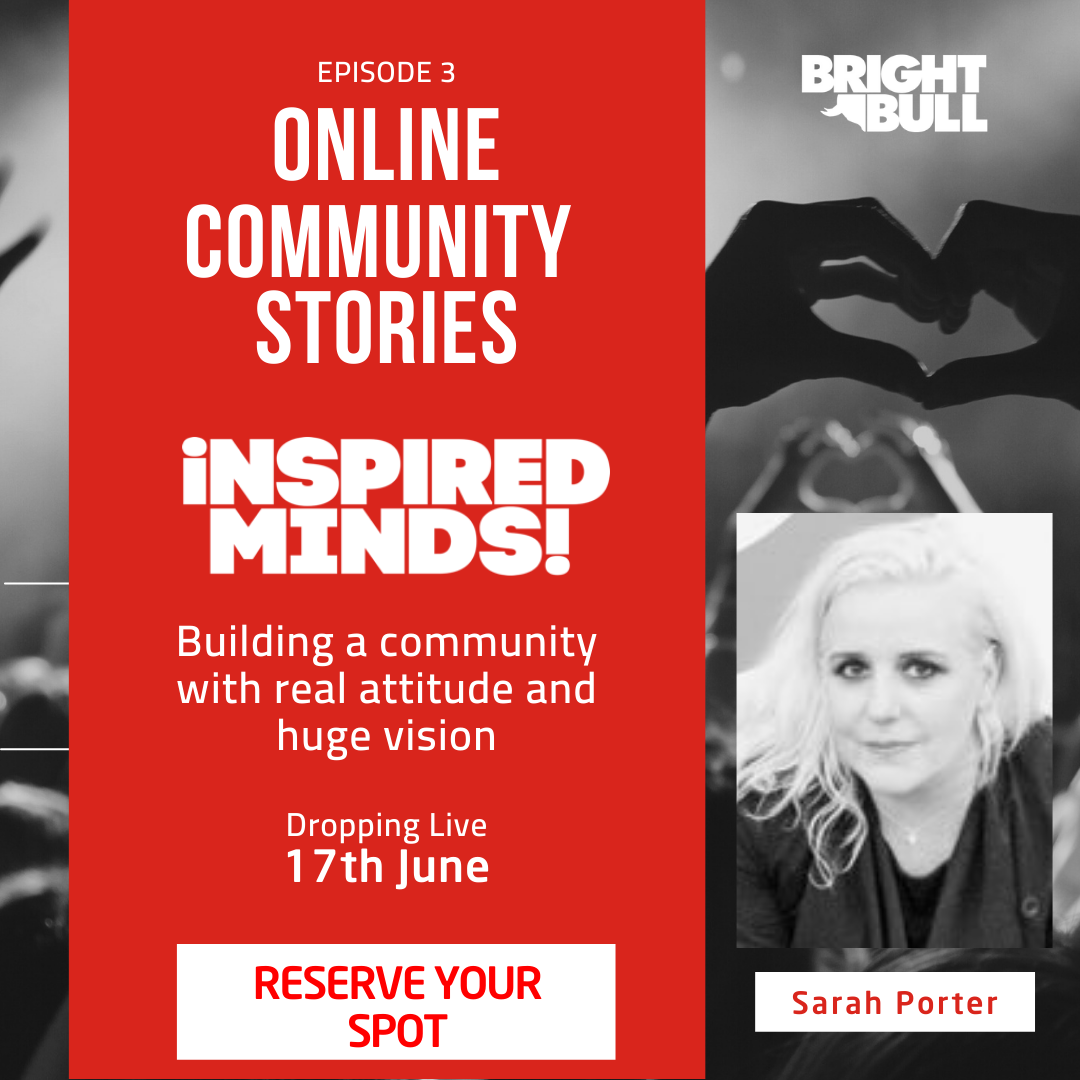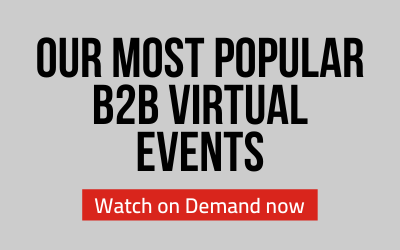
I’ve just managed to get on top of my inbox. It took quite a large chunk of time (I won’t say how many hours). I’ve responded to those ‘I’ll reply tomorrow’ flagged messages, the forgotten-about starred memos and the mass of unread (and now deleted) marketing messages. Although I feel pretty triumphant, I know it will be overflowing again by next week.
Email has become a large part of every professional’s daily routine – whether we like it or not. A mountain of 123.9 billion business emails whizz around the web every day, with the average professional sending and receiving 131 emails every 24 hours, according to a study by Radicati.
Email can be a powerful marketing channel when used correctly. An Adobe report has revealed engagement via email is still the most desirable form of communication between businesses.
Monica DiBartolo, email marketing director at Jellyfish, explains: “Email marketing is far from dying; in fact, it’s quite the opposite. The channel is actually going through a bit of a resurgence, mainly due to the benefits of marketing automation (MA). Email is the only digital marketing channel that has essentially been unchanged since the early 90s, until recently. We are on the brink of a major evolution.”
Yet, despite advancements in technology making email better than ever, the average open rate sits at just 21 per cent, while click-throughs are a tiny 2.3 per cent, according to Silverpop’s 2015 Email Marketing Benchmark Study.
Drew Nicholson, CEO of OgilvyOne Business, discloses the reason behind these low stats: “The nature and perception of email marketing, and regularly unfounded associations with spam, means that from a practical perspective, if someone feels that your email is not relevant to them, or that it is impersonal – or that they simply don’t remember signing up to receive anything from you – then there is an increased possibility that they will mark your message as spam. This directly affects your overall reputation as a sender and can impact your ability to send further emails to all customers, not just that one individual.”
It’s clear email marketing is by no means easy. Marketers need to invest time and resources to ensure their messages resonate and engage with prospects and customers. This is a huge challenge, but there are plenty of rewards if you get it right – In October last year Bizible released research showing that email is the channel that has the most impact on revenue.
To ensure your email campaigns don’t fail, avoid the following mistakes:
1. Sticking to the same subject line
Sender name and the subject line remain the only way to entice an individual to open a marketing email. Following the same formula each week will bore your audience. This may seem like obvious advice, but it remains an issue as brands continuously stick with what has worked well in the past. For example, more and more businesses are adopting BuzzFeed style subject lines, such as ‘top 10 ways to…’ At first this may have proved popular, but with more brands using it, your message could easily be lost in the crowd.
Furthermore, Farah Radford, founder of digital marketing agency Digivita, warns marketers to avoid old school sales tactics: “What rubs subscribers up the wrong way is having a barrage of ‘last chance’ opportunities. It becomes tiresome, even for the most patient and optimistic customers. If urgency feels like a false claim, sooner or later people will start to ignore it.”
2. Oversharing
Marketers need to ensure emails are short and snappy in order to be read. Let’s face it, professionals are unlikely to have the time or patience to read a marketing email with copy longer than three or four paragraphs.
Keep copy short and concise – don’t give everything away so readers have a reason to click. Previously, using visuals within emails was a problem because of slow internet load times, but with ever-faster broadband and 4G now available this is no longer the case. Feel free to use gifs, images and videos as they are easier to consume than text. Ensure call-to-actions are obvious. Do this by using bright bold buttons or you can be slightly subtler by just clearly underlining links.
Neil Taylor, creative partner at The Writer, advises: “Because we’re all drowning in email, it’s a proper Darwinian test: survival of the fittest. Or in email terms: the leanest, or the funniest, or the most surprising.
“Structure will give you a big hand. All the research shows readers’ eyes head straight to subheadings and bullets, and skim past paragraphs of prose. Start with a couple of dense paragraphs that someone needs to scroll through and you’re dead.”
3. Forgetting mobile
Forty-five per cent of emails are now read on mobile, an Adestra study has shown. As a result, it’s vital email templates are responsive and content is easily consumable on all devices.
Georgia Marshall Brown, digital strategist at MMP Global, emphasises: “Mobile use is growing, offering users multiple brief interactions, anywhere and anytime. Email content should reflect this, and content can be optimised into bitesized chunks offering users instant access to the information they need, right from the palm of their hand.”
Many email service providers display how an email will appear on a range of devices before you hit send. But to double check the message is optimised for all devices and content is pulling through correctly, send a quick test and open it on desktop as well as your audiences’ favourite mobile device.
4. Not segmenting data
Spending days, weeks or even months creating standard email templates that align with the business house style and can be used throughout multiple campaigns may have been best practice a few years ago. However, it’s now crucial B2B marketers put the customer centre stage, and this means creating customisable emails that suit their needs.
Sarah Hooper, communications and planning director at Amaze One, explains: “Creating a succession of emails and newsletters takes time and money. So it’s tempting to ask for a standard template that makes creating each campaign simpler and cheaper. But there’s a problem with this thinking: it places your speed and convenience ahead of the needs of the customer. And, unless the customer is the driver for your email design, it won’t maximise its results.”
This doesn’t mean customising every single communication for each individual prospect, but having a deep enough knowledge of your audience so you can send communications they actually want to open, read and click. This means customer segmentation.
Ross Travendale, head of media at Ideas Made Digital, urges marketers to use the tools available to understand audience demographics and their interests in order to send emails they actually care about. He says: “Open rates on special offers and broad spectrum information are dead. We need to invest the hours into crafting your lists into smaller lists with their own unique likes and attributes.”
In addition to customer interests, marketers need to ask some important questions before launching an email campaign. Jenna Tiffany, digital marketing strategist at Communicator, explains: “There are important areas to consider such as how does the customer want to engage with your brand? What does their behaviour say about their interaction with you? It’s not about dictating the journeys your recipients should have with your email marketing, but more about ensuring you are sending the right message, at the right time, in the right context.”
5. Poor personalisation
After you have segmented customers into target audience groups you can begin to personalise. This is easier said than done – we’ve all witnessed mistakes when it comes to email personalisation. The most common being when an email addressed to ‘Dear [First name] [Last name]’ lands in your inbox.
Pippa Anag, data manager at The Specialist Works, stresses the importance of getting personalisation right: “Email is one of the few channels where you can create the illusion that this is a 1:1 relationship between you and your audience. Include a sensible amount of personalisation, send at a time you know the recipient will be able to read the email and use previous engagement and purchase history to drive dynamic content.”
To achieve true personalisation marketers need to use the range of tools provided by MA vendors and email service providers.
Jellyfish agency’s DiBartolo explains: “The benefits of MA are realised when you put your customer at the heart of your communication strategies. In doing so you can provide automated content based on their interests and engagement behaviour. MA supports the marketer by doing this in a programmatic manner that is efficient and measurable. Analytics beyond standard performance reporting is vital in today’s world. Lead scoring and monitoring your customers’ behavior will guide necessary strategy tweaks, thus making your marketing efforts more effective.”
Yet, with the amount of data and technology available, marketers need to be careful not to go overboard and ‘over-personalise’ messages. While people like to feel special, they don’t want to be continuously reminded that their movements are being tracked online.
How to avoid email marketing failure
The above mistakes prove that while email is one of the most popular and valuable marketing channels, it also presents a range of challenges B2B marketers need to overcome in order to be successful. To avoid failure, marketers need to ditch sending mass-produced communications, and focus on concise, customised messages sent to small customer segments.
Radford of Digivita offers one final piece of valuable advice: “If you do have an email ‘fail’ you could always employ an ‘oops’ campaign. This is where you send a follow-up email saying ‘oops’ and explaining what problem occurred. More often than not these get better open rates than the original email."
If you’re interested in our B2BMarketing Ignite Event, feel free to use our code RIMIGNITEDR. This will give you a 10% discount on your ticket and a £10 donation to the charity of your choice every time it’s used.
Be sure to check out @MarketingB2B on Twitter and the hashtag #IgniteB2B to get more updates on the event. And don't forget to register on the event website by clicking the button below!






Do you have any comments?